32 Fun Facts About Scotland: From Uniting the Kingdom to Unicorns

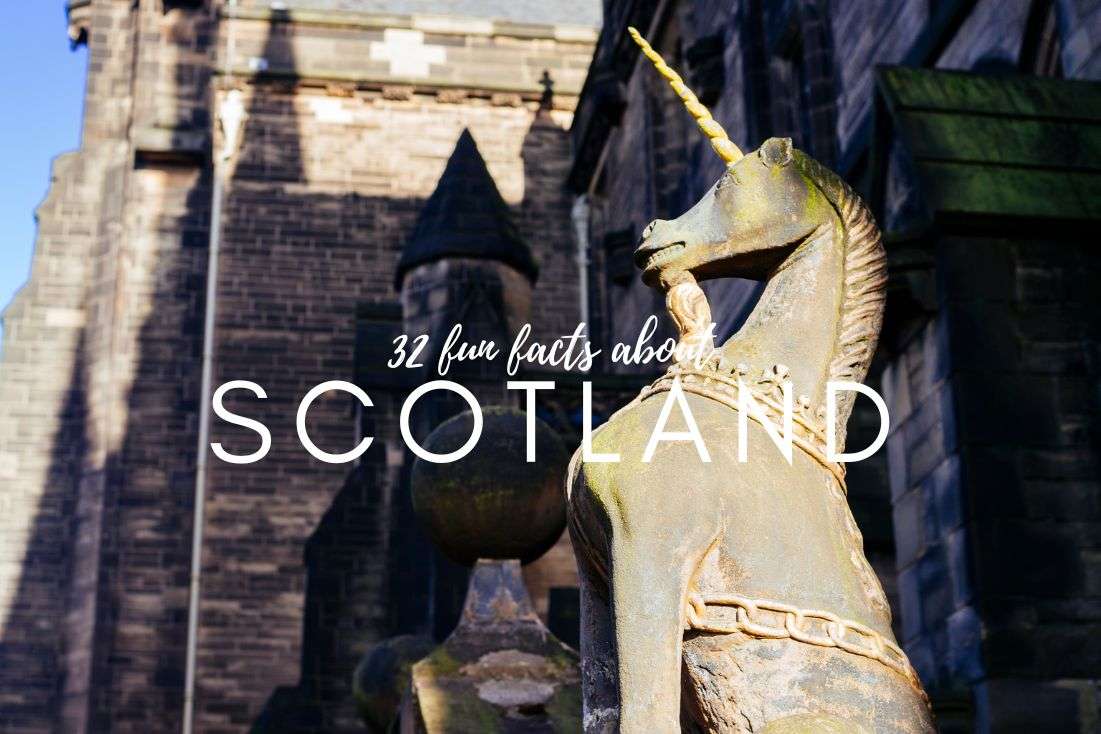
Scotland is as mystical as it is beautiful. With a tumultuous history full of rebellions and clan allegiances, it’s interesting to read all about the hardy, read-headed (or are they?) nation that loves their whisky and haggis!
In this article, you’ll find:
- 15 fun facts about Scotland
- 6 Scottish history facts
- 11 Scottish cultural facts
If you’re ready to depart and go searching for fairies and kilts, read our Scotland itineraries. Book hotels through our booking.com affiliate links to get the best hand-picked options that we know you’ll love. (If you do, we get a small commission at no extra cost to you. We take care to only recommend those hotels that we know are great. Thank you!)
Find more articles about Scotland here.
Ready, set, learn!
Fun facts about Scotland
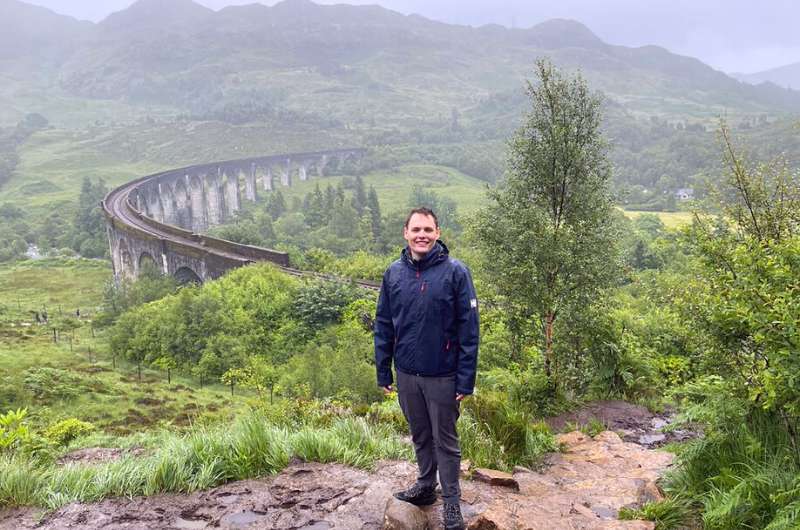
Any Harry Potter fans out there? You might recognize this railway bridge… Read more about it in our guide to the best places in Glencoe
1. Scotland tree line
The tree line in Scotland is generally the lowest in Europe except for Norway. It’s even lower than Alaska’s! On average, the tree line in Scotland is at about 500 m (1600 ft) above sea level, ensuring those beautiful Scottish landscapes aren’t spoiled by trees.
The reason the trees in Scotland don’t want to grow any higher is because of the wind, lack of sun, and the boggy earth. Scotland is also at a relatively high latitude on the globe. High latitude = lower tree line.
Check out Scotland’s best hikes and really enjoy the lack of trees!
2. Scotland used to be in the southern hemisphere
About 520 million years ago, Scotland was part of southern hemisphere, separate from the rest of Britain—they were on different continents entirely. The two then decided to sail closer together (that took about 1 million years), crash into each other and thus connect Great Britain, while hanging out around the equator in what is now America.
Fast forward a few hundred million years when the Atlantic Ocean was created, and Scotland finally became part of Europe.
The rocks in Scotland are some of the oldest in the entire world!
3. Northwestern Scotland is US
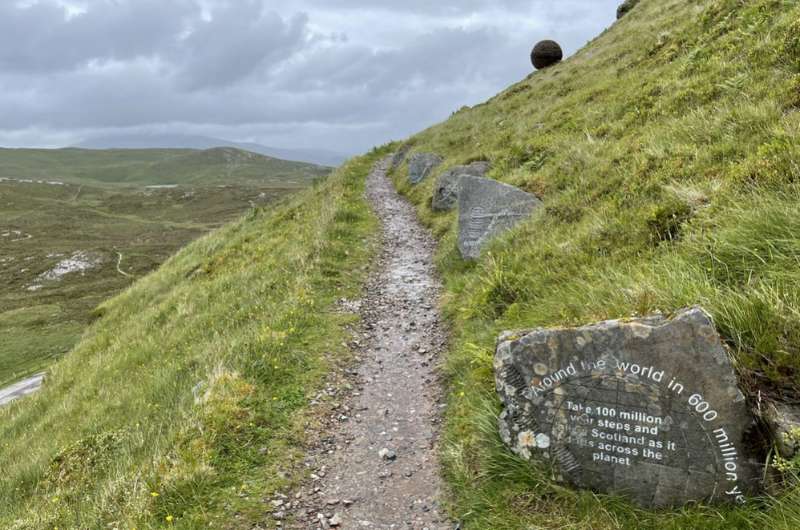
Visiting the Knockan Crag in the Northern Highlands
Not so long ago (about 60 million years ago), Great Britain was part of the American continent. That was before it floated over to where it is now, but you can see the striking similarities between the Scottish Highlands and the Appalachian Mountains—in relief and just overall visually.
The Knockan Crag is a fascinating part of the Moine Thrust, which was created millions of years ago when the two continents crashed together. And lucky us, we got to visit it! Read about it and other top places to visit in the Northern Highlands.
4. Corryvreckan Whirlpool
There is a massive whirlpool in Scotland that is the 3rd largest in the world—the Corryvreckan Whirlpool. Although it sounds scary, it’s not that dangerous (you can take a boat trip there if you want to trust your captain) and it’s not that big—then again, there aren’t that many of them in the world.
Corryvreckan Whirlpool lies between Jura and Scarba Islands in southeast Scotland.
5. Scotland is actually very warm
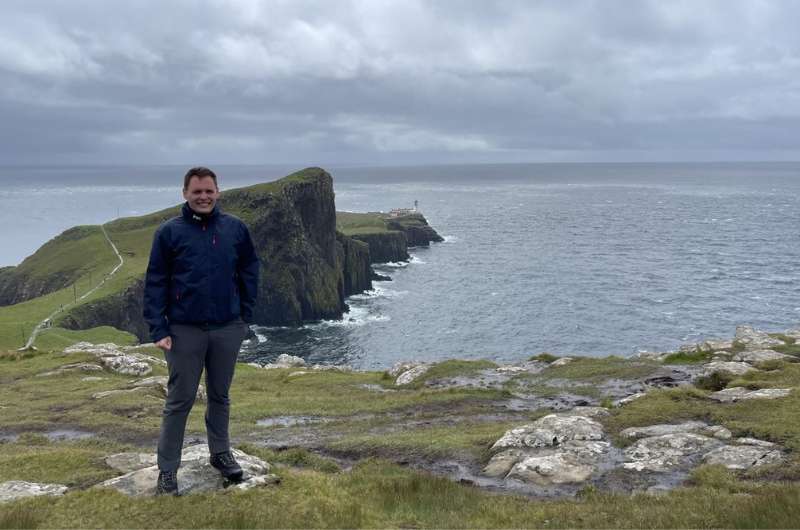
Me basking in the warmth at Neist Point Lighthouse on Isle of Skye
Ok, it doesn’t feel very warm, but bear with me. Given Scotland’s latitude is similar to that of Kamchatka in Russia or Labrador in Canada, which are basically permafrost and tundra climates, Scotland is as balmy as you could hope!
Scotland is much warmer year-round because of the nearby Gulf Stream, which is a flow of warm sea water.
6. Long days and short nights
Norway or Iceland, sure, but Scotland?! Yep. Scotland isn’t known for its extra-long days and short nights, but that don’t mean it ain’t true!
In the summer, northern Scotland has well over 18 hours of daylight, and even Scotland’s capital, Edinburgh, has days of 17.5 hours, making it one of the longest in Europe.
Top tips for visiting Scotland:
- First of all, go! We’ve rated Scotland a 10/10, just a (red) hair short of Chile, USA, and South Africa. It’s awesome.
- It’s best to visit Scotland in shoulder season to beat the biggest crowds and highest prices—late spring or early fall is perfect (though in no way warm!).
- The scenery is really as incredible as you hope it will be. Here are the best hikes in Scotland.
7. Isle or island?
There are a lot of isles in Scotland, but why aren’t they just called islands? The explanation is really simple—and isle and an island is the same, both meaning a land mass surrounded by water.
The word ‘isle’ is an archaic form of the word ‘island’, hence the islands that are called ‘isle’ are older, and the ones that were discovered later are called ‘island’.
Sometimes, an isle means that the land mass is smaller in size than an island would be, but there’s no official definition that would imply so.
In summary, it’s the same thing.
An islet, on the other hand, it usually tiny and uninhabitable by humans.
The best hotels on Isle of Skye
The best hotels in Glencoe
The best hotels in Edinburgh
We are comfortable recommending these hotels because we have either stayed in them and were happy, or have otherwise made sure they are up to the Next Level standard.
8. Unusual plants in Scotland
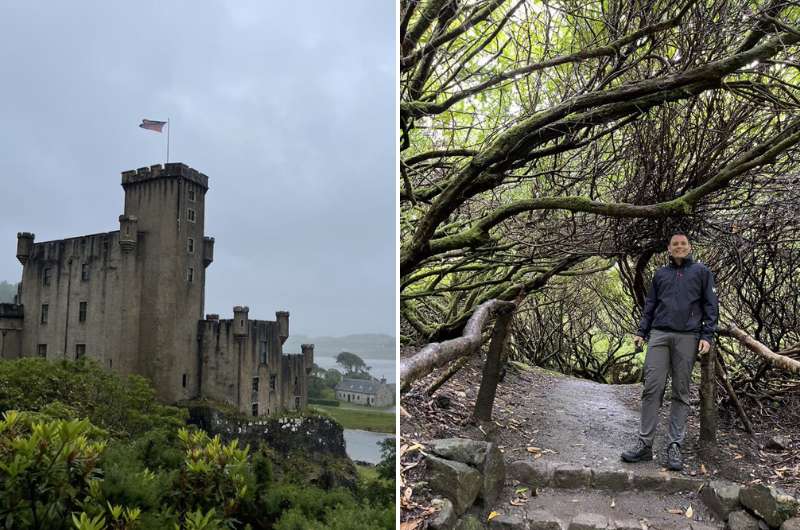
Me at Dunvegan Castle gardensMe at Dunvegan Castle gardens
The northwest part of Scotland is where you can find lots of rhododendrons—large shrubs with incredible flowers. They can be massive and they also happen to be my favorite tree/bush/plant thing.
Rhododendrons aren’t endemic to Scotland, growing in several places of the world (though none occur naturally in South America or Africa), but in Scotland, they’re everywhere! Very cool.
We saw some wonderful rhododendrons in the Dunvegan Castle Gardens on Isle of Skye.
9. Density of population in Scotland
Scotland is quite sparsely populated for a European country; it has about 70 people per km2. The least populated areas in the Scottish Highlands have a density of just 9 people per km2! Edinburgh, on the other hand, has about 1800 people per km2.
Though they still have nothing on Iceland at 3 people per km2 or even Norway at 15 people per km2. On the other side of the spectrum is Belgium with 380 people per km2 and the Netherlands with a whopping 500 humans per km2!
10. Munro Baggin
There is a very popular hiking challenge in Scotland called “Munro baggin”. The goal is to summit as many of the 282 Munros—mountains over 3000 feet (about 900 m)–as possible. Once you reach the summit of the Munro, you’ve bagged it!
So if you don’t have anything to do when you are old, I believe this could be a fun thing to keep you fresh and in shape for years.
If you bag them all, you can add yourself to the list of about 6000 Munroists that have completed the challenge so far.
Not sure where to start baggin? See the best hikes in Scotland.
11. Gaelic road signs
The primary language on road signs in Scotland is Gaelic, an ancient Celtic language which is spoken to some degree by 60,000 Scots.
English is the second language on the bilingual road signs in Scotland.
12. Scotland rain—truth or myth?
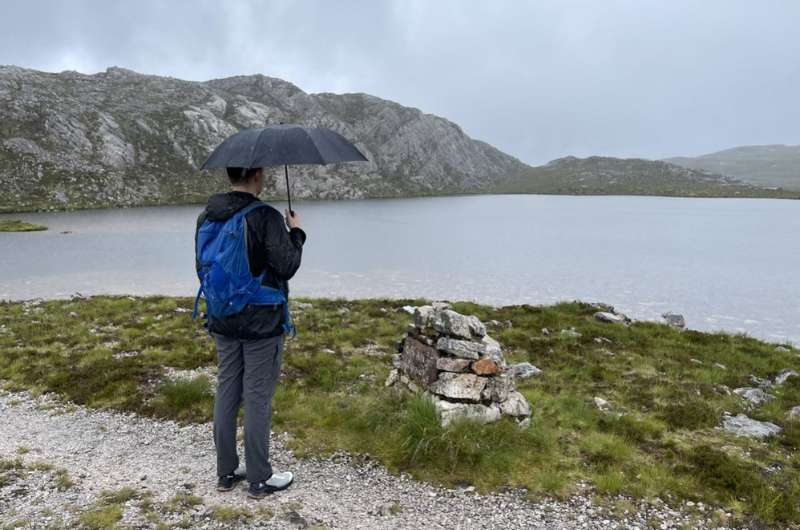
You can never be waterproof enough in Scotland. Me on the Ben Eighe circular hike
Of course truth! No matter how you measure it, Scotland is one of the rainiest places in Europe.
The amount of rain the country gets varies based on region, with the wettest being the western Highlands with 250 days of rain per year and up to 4,570 mm (180 in) of rain per year. And it’s bloody freezing rain!!
The driest parts of Scotland are on the east coast with 170 rainy days per year.
13. Scotland, the land of islands
You don’t really see the open sea in Scotland since it is made out of about 900 islands and many more islets. If you add the many fjords and lochs it equals no open sea views.
Only 94 of all of those islands are permanently inhabited (by humans).
14. Lochs
There are over 30,000—not kidding!—lochs in Scotland.
A loch is a lake. They vary in size from little to Loch Lomond, which has a surface area of 71 km2 (bigger than the country of San Marino!). Loch Morar is the deepest with a depth of 310 m (1,017 ft), and Loch Ness (yes, the Loch Ness) is the largest based on volume.
Read more about the home of Nessie in our article about the best things to do in Glencoe.
15. Caledonian Channel
The Caledonian Channel is one of the miracles of the Industrial Age as it essentially makes northern Scotland an island. It connects the Irish and North Seas, chopping Scotland in half and making it a country where the north does not physically touch the south.
The channel was completed in 1822, after many problems and criticism, between Inverness in the east and Corpach on the west coast. Its length is about 100 km (60 miles).
Scottish history facts
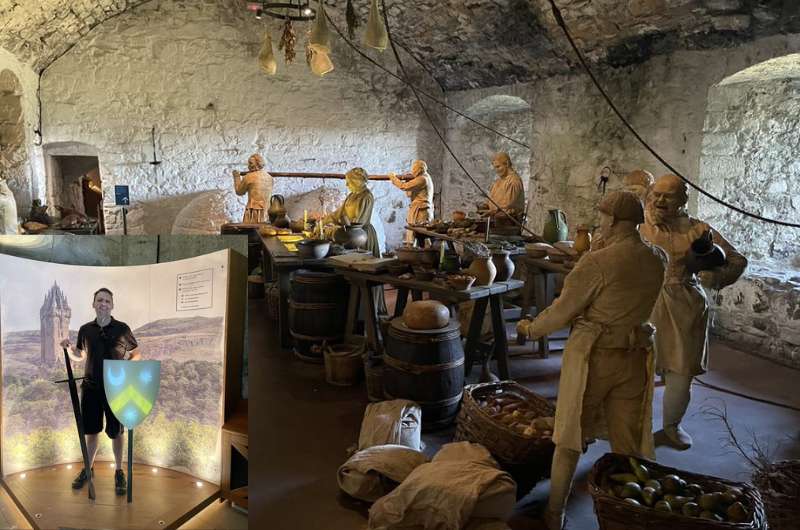
Becoming part of history @ Stirling Castle
16. MacDonald Massacre at Glencoe
The 1692 massacre isn’t known so much for how many people were killed, but because it was carried out in such an appalling way.
Basically, King William III wanted all the clan bosses to sign an oath of allegiance to himself and Mary II. There were some disputes that lead to these signatures trickling in rather slowly.
As a warning to the other clans, the Glencoe MacDonalds, who had waited too long to sign—but indeed signed!—, were “visited” by a group of 128 soldiers. The MacDonald’s hosted them, totally unaware of what was about to happen.
After 12 days of friendly cohabitation, the soldiers turned on the MacDonalds, killing about 30 of them.
17. Granades and mortar
Grenades are believed to have first been called grenades during the Battles of Killiecrankie in 1689 against the Jacobites. They were iron balls filled with gunpowder. Though not very effective in battle, there were soldiers that specialized in throwing them.
One of the earliest instances of the use of easily transportable mortars (not the heavy, huge things that were used before) was at the Jacobite rising in 1719 in the West Highlands. Again against the Jacobites.
18. Oldest working castle
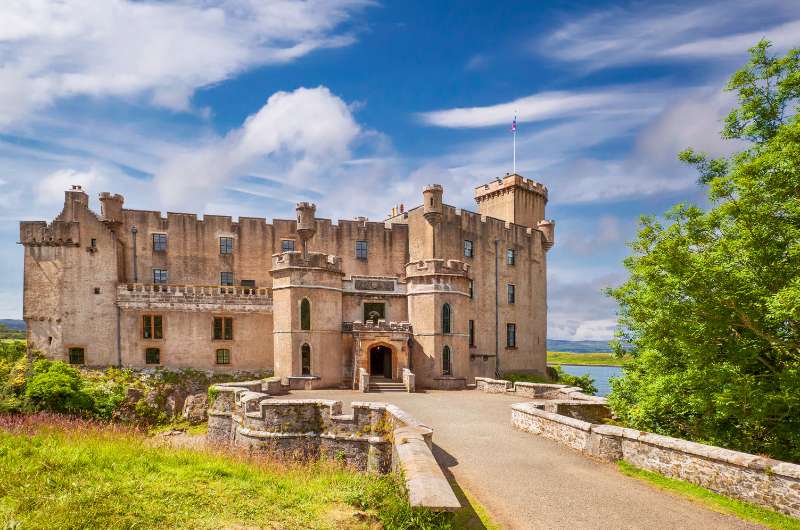
Still workin’! Dunvegan Castle on Isle of Skye
Dunvegan Castle on the Isle of Skye is the longest continually-inhabited castle in Scotland. The MacLeod clan chiefs have been living there for 800 years now.
It isn’t the oldest castle—that’s most likely Castle Sween, built in the 1100s, but it hasn’t been occupied for half a millennium.
We visited Dunvegan Castle (and many others)—check out our article about the best castles in Scotland.
19. Scottish independence
There is a long history of rebellions and uprisings in Scotland, so one would think that Scotland became part of the UK by war.
In fact, it became part of the United Kingdom in sort of a union, which is why it’s called the United Kingdom. The crown of England was inherited by James VI, King of Scotland after the death of the legendary Elizabeth I, Queen of England, in 1603. Elizabeth didn’t have children (or a husband), so the next available heir to the throne was her cousin, James.
James didn’t want to be monarch of two countries, instead opting to unite them into one. Tadaa, United Kingdom.
Nowadays, the official residence of monarchs in Scotland is Holyrood Palace in Edinburgh. See our article about the best things to see in Edinburgh (it includes the Palace and the Edinburgh Castle).
20. Mary, Queen of Scots vs Elizabeth I
It’s a well-known fact that these ladies hated each other as they were both power-hungry and mean. They wanted each other’s thrones, with many in England thinking Mary was rightfully the Queen of England, not Elizabeth.
But, in the end, after some bad decision-making on Mary’s part (it had to do with her love life), Elizabeth prevailed and executed Mary when she ran away to England from a Scotland that ousted her (because of said love life).
In the end, Elizabeth died childless. With Mary and Elisabeth being cousins, the English crown passed to Mary’s son James VI. Who gets the last laugh now, right? Free karma!
21. Scotland and Gaelic
As is usually the case, Scotland has a colorful and tumultuous history. Gaelic, though now still spoken in Scotland, and a mouthful for almost everyone, is definitely not its original language.
Before the Gaels, which came much later from Ireland, Celtic tribes such as the Picts spoke languages of their own. Not much is known of Pictish, and little has remained as far as written proof of it. Some towns, like Pittenweem and Pitlochry, still have Pictish names.
So we are left with the tongue-twister language of Gaelic. The official language of Scotland is now English.
Scottish cultural facts

Just a redhead dreaming of unicorns and whisky
22. Scotland the nation of Border collie
The Border Collie aka the smartest dog in the world is originally from Scotland and you can see that they are very proud of them. They are literally everywhere in Scotland. There are an estimated 50,000 Border Collies in Scotland.
Why “border collie”? Collie is just a Scottish word that means sheepdog, and “border” simply because the dogs thrived in the border region between England and Scotland. I was expecting a more elaborate reason for the name, but nope.
23. What are the biggest clans in Scotland?
There are more than 500 clans in Scotland. Clans are a group of people with the same last name (not always with direct family ties), usually associated with the area where they live, loyal to the clan chief. Clan members were and are proud and displayed their allegiance whenever they can.
Generally speaking, the largest clans are the Mackenzies, the MacLeods, the Frasiers and the MacDonalds. It’s why they’re so prominent in Anglo Saxon books and TV shows. They usually ascended to duke-level royalty.
24. Are clans still a thing in Scotland?
The first mentions of clans in Scotland are from the 12–13th centuries. They were the main political system until 1976, when the Jacobite uprising was crushed.
After that, Scotland came under the control of England, all land authority was stripped from surviving clan chiefs, essentially dispelling clans. Clan tartans (along with playing bagpipes and speaking Gaelic) were outlawed.
Today, clans are still recognized and have an official Seal of Arms that is only to be used by the clan chief. Surnames may not be the same throughout the clans, but most Scottish can figure out their clan with some research into their family history.
25. Whisky or whiskey?
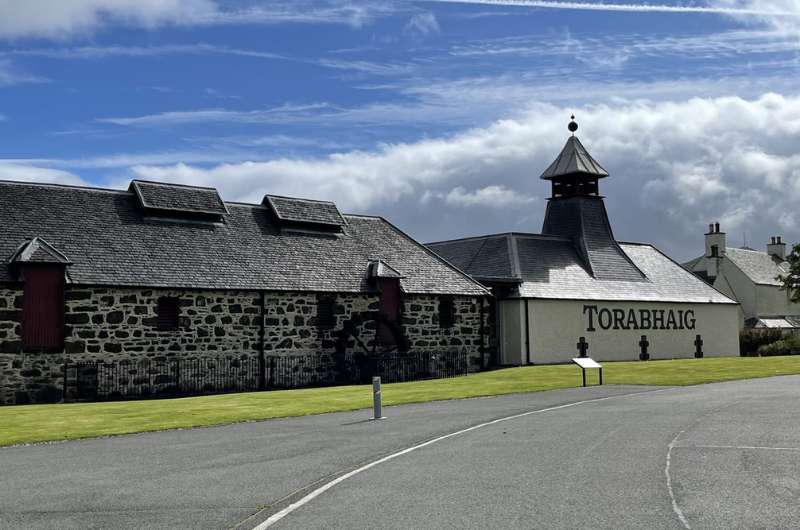
Torabhaig Distillery on Isle of Skye: Where we fell in love with whisky
Whisky with a ‘y’ at the end is from Scotland (or Japan or Canada) and whiskey with an ‘ey’ is from Ireland (or the US). Don’t get it twisted!
But do take a whisky distillery tour: We fell in love with whisky after our tour of Torabhaig Distillery on the Isle of Skye.
26. Are there really that many redheads in Scotland?
People imagine Scotland like a moving red bush (Blackadder reference). But let’s set the record straight.
On a worldwide scale, 2% of people have red hair. In Scotland, the number is somewhere between 6–13%. One in 8 people have red hair, and at least another 2 of those 8 carry the red hair gene.
Scotland is therefore the redhead capital of the world, with the largest density of redheads in Edinburgh.
Interestingly, the reason for this is that redheads have an incredible superpower—they produce vitamin D more efficiently than any other hair color. In a country with little sunlight and many cloudy and rainy days, being able to make your vitamin D better and faster gave you the evolutionary edge. Those with vitamin D deficiency dies, those with red hair survived and multiplied. Pretty cool, right?
27. Tartan in Scotland
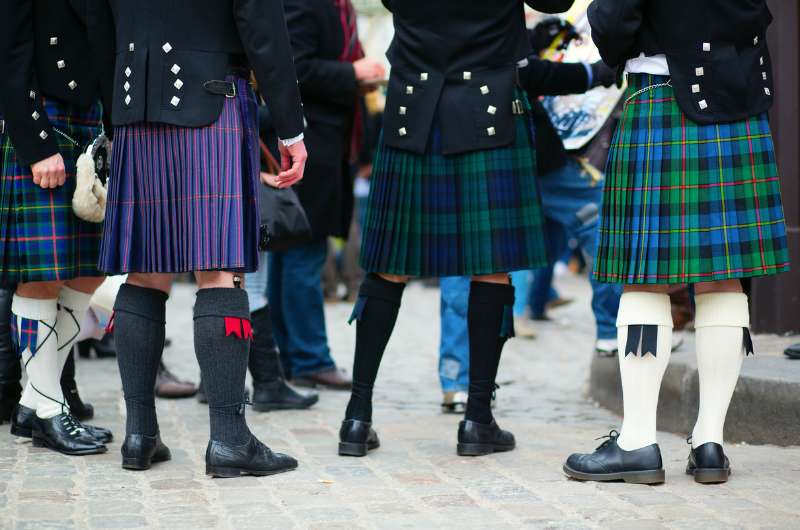
You haven’t pictured a Scottish person in your mind without dressing him/her in tartan!
Tartan is a textile with a pattern of horizontal and vertical stripes of different colors. Kilts and other pieces of clothing can be made of tartan. Historically, tartan started to be worn by royals in Scotland in the 15th century. It was practical since it used to be made of wool. Great for Scottish weather.
Clans also had their own tartan, as a sign of allegiance and belonging, which was especially important during all the rebellions and battles. They would choose one that wasn’t being used yet by anyone else and bam! Clan tartan.
Nowadays, tartan is so popular because it is distinct for Scotland. Not the other way around.
28. The immortal Gaelic language
Gaelic almost died out in Scotland when all public schools started to be taught in English.
Then came Sir Ian Noble (who happened to also envisioned Torabhaig Distillery on the Isle of Skye). He resurrected the almost dead language as he recognized Gaelic as important part of Scottish cultural heritage. He also famously wanted to keep the English off of the Isle of Skye to keep the Gaelic bloodline pure and English-free.
He did a huge amount of work to keep the Gaelic language alive, like founding Gaelic College, the only higher education institute to teach exclusively in Gaelic, and generally practiced "positive discrimination" on behalf of Gaelic speakers.
There are less than 60,000 speakers of Gaelic in Scotland nowadays which does not seem like much, but it’s a huge number if you remember that once there were only about 1,000 Gaelic speakers.
29. Unicorns in Scotland
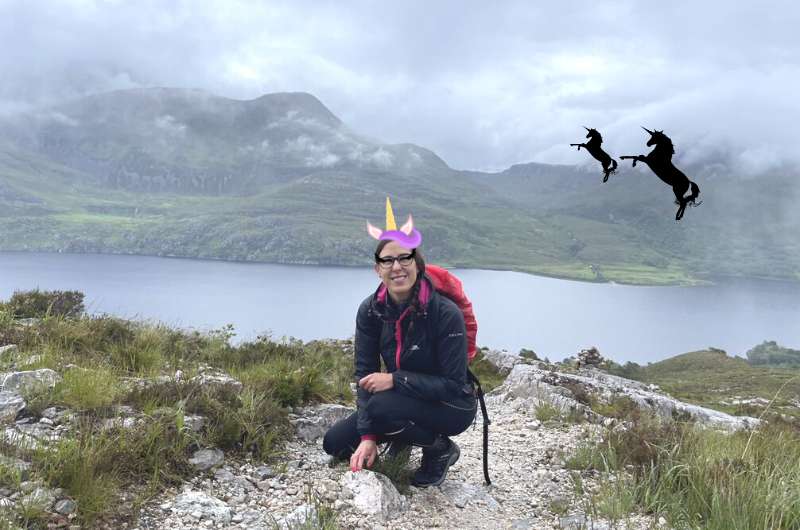
This really happened
The national animal of Scotland is the unicorn. I mean in the land of fairies, it’s only fitting that the national animal is mystical.
But if you think about it, all heraldry is a little wack. You don’t see many lions in the Czech Republic or dragons in Germany either.
Why unicorns? According to legend, they are fiercely loyal, independent and untamable—just like the Scottish.
30. The land of Steampunk (ehem, inventions)
Scotland is one of the richest parts of the UK and rightly so. It’s known as the most industrialized part of the UK and one of the most inventive.
Some Scottish inventions are:
- the steam engine (James Watt)
- the telephone (Alexander Graham Bell)
- the bicycle (Kirkpatrick Macmillan and Thomas McCall)
- pneumatic tires (John Boyd Dunlop)
- the suspension crane (James Bremner)
- and many more!
31. Game of golf
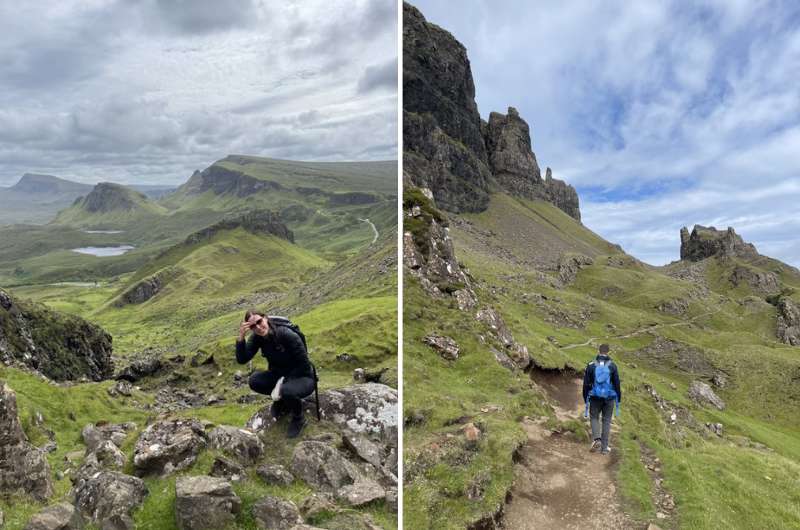
The holes of the first ever golf courses used the natural landscape… I’d love to see the adventure course @ Quiraing on Isle of Skye!
Scotland is the home of golf. It’s where the game originated, or at least where it is credited to, though even the Romans pushed a little ball around with bent sticks.
Scotland is the first place where golf clubs, golf courses and golf tournaments were established. The Scottish wrote down the rules and created the 18-hole course (at the St. Andrews golf course, which is considered the home of golf, so everyone else followed suit).
King James IV bought some golf clubs in the beginning on the 16th century, and the rest is history.
32. Haggis
Haggis is famous for sounding and looking…well, not very appetizing. It’s the national food of Scotland and it tastes much better than it sounds. and it can be even healthy.
It’s a sheep’s stomach filled with onions, liver, heart and lungs all mashed together with oatmeal and blood. Yummy!
Read our Scottish food guide for more delicacies.
You might also be interested in reading:
- 10-Day Scotland Itinerary (with 2-week extension)
- Isle of Skye Itinerary for 2 days
- 13 Best Places to Visit in Scotland for Couples
- Driving in Scotland: Itineraries for the 7 Best Road Trips + Tips
This post may contain affiliate links. We earn a small commission if you make bookings through my links, at no additional cost to you. Thank you for your support!


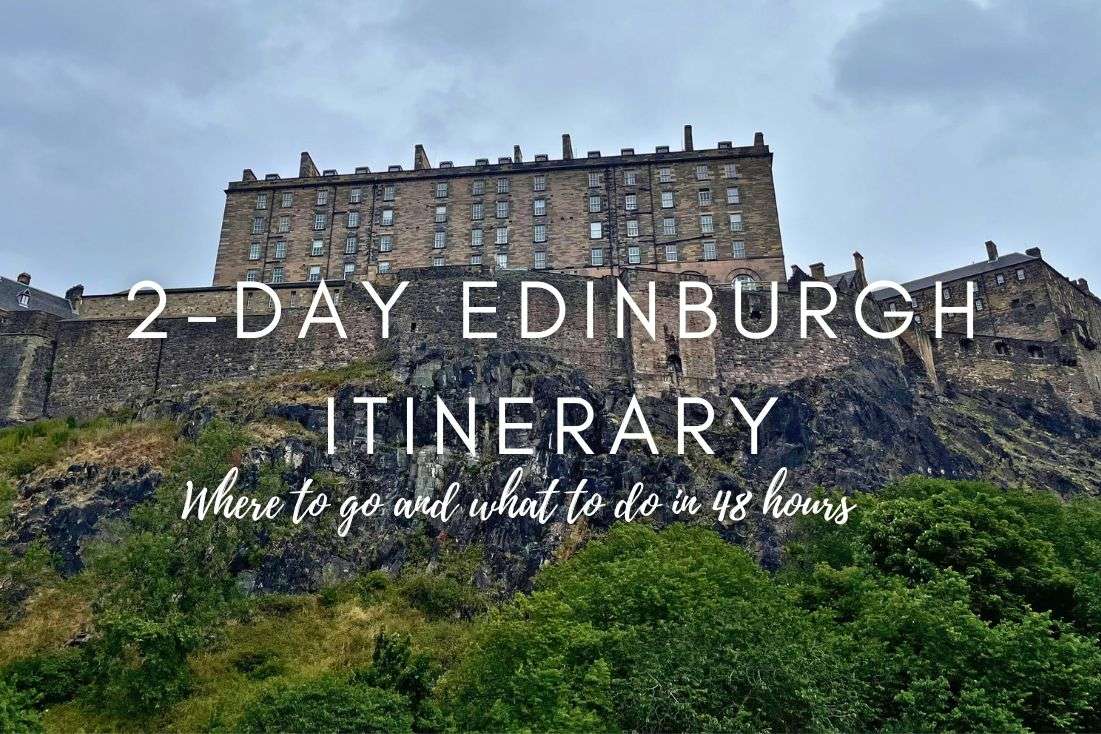
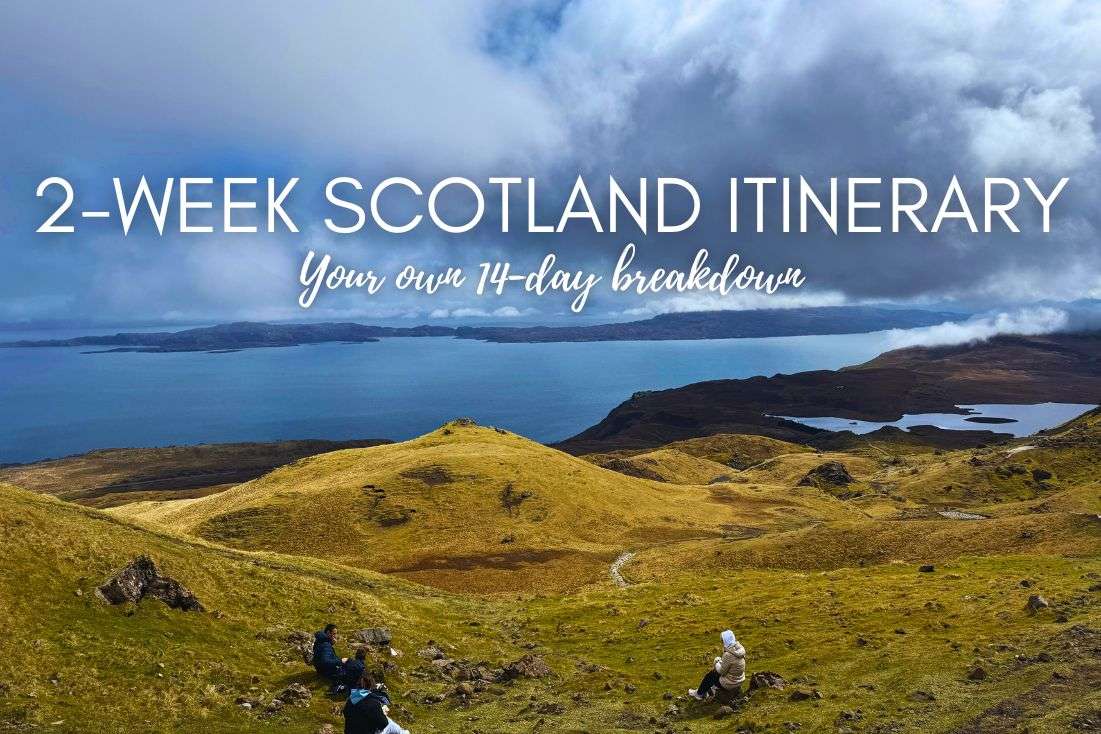
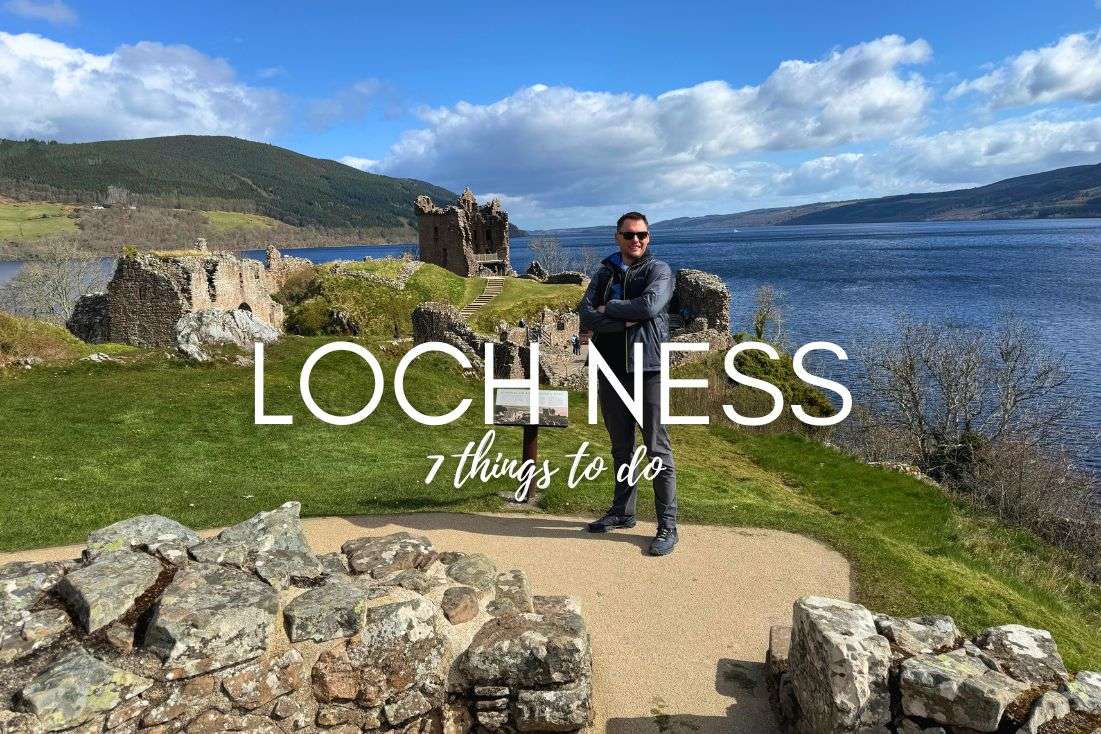





Comments | Thoughts? Give us a shout!